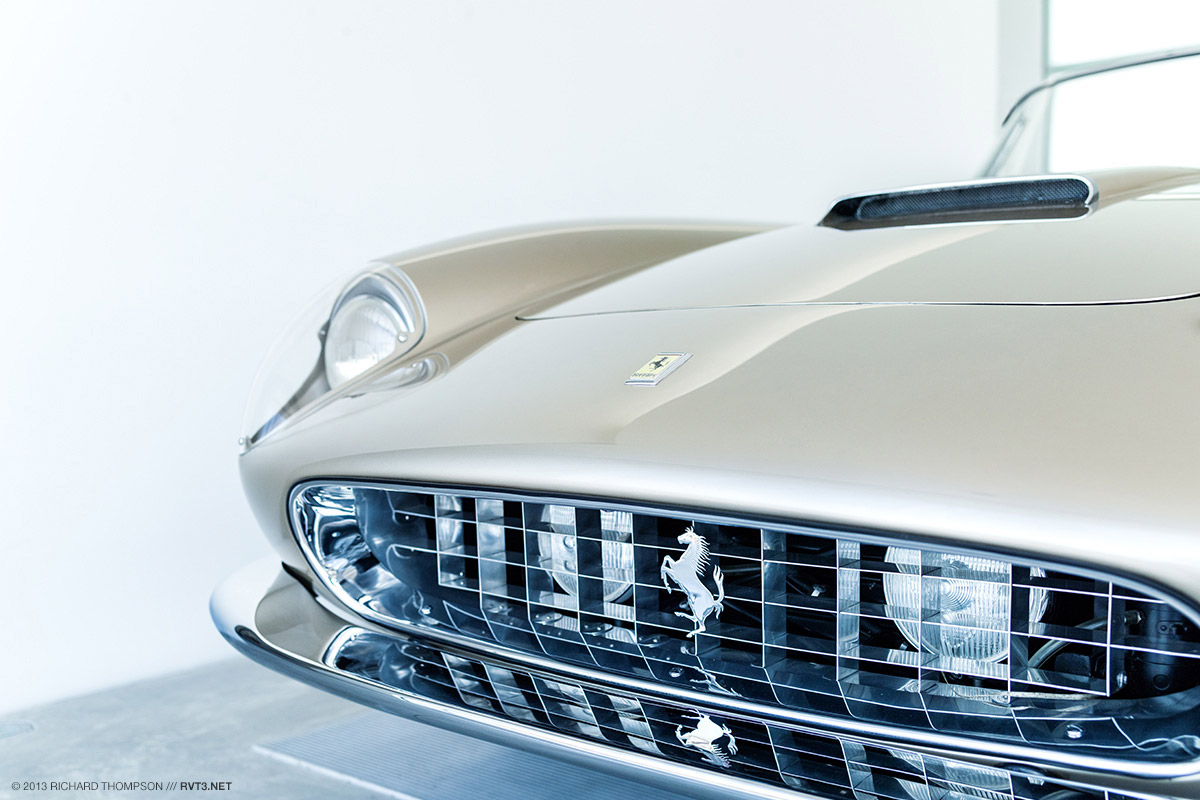










Behind the Curtain with Photographer Richard Thompson III
For seasoned Los Angeles-based photographer Richard Thompson III, car photography is serious business filled with surprises. He got interested in the automotive world at age fifteen (a late start by many gearhead standards), and his passion for cars can be found in every photo, with a client list that reaches into nearly every corner of motorsports and lifestyle culture, from GQ to Top Gear.

Q:
When did your love for automobiles start?
A: Later than one might expect—around the age of 15. My parents (both car lovers) had been through the Barber and Russell formula racing programs and decided I wouldn’t be allowed to do much driving until I’d been down the same road. After I had some seat time in those trainer Formula cars I was hooked. From there I dove into sports cars and the rest is history.
Q: How long have you been a photographer?
A: I’ve been shooting professionally for about ten years, and making photographs another 8-10 years before that.
Q: Who or what inspired you to become a photographer?
A: My father was an active outdoorsman during my childhood. He shot a lot of landscape and travel imagery which he’d show on a slide projector, sometimes in our home. Watching those slideshows, I think, was the spark.
Q: Did you go to school for photography?
A:
Savannah College of Art and Design in the Southeast US, about ten years ago.
Q: What was your first professional job?
A: I had a few before photography in graphic and web design. My first photo jobs were definitely car related, although I can’t remember details.
Q: What’s been your favorite classic car to photograph?
A: My favorite was easily the ’61 Ferrari 250 SWB Competizione, a shoot that took place at Holger Schubert’s home for a special book project. There were some beautiful cars in the garage during that shoot, but to see a LeMans winning race car roll through was almost too much to believe. It transformed the house into a museum. We also had one of Schumacher’s championship F1 cars, but since we’re sticking to classics…
Q: Before you click the shutter, what process do you go through developing a pitch?
A: It’s heavily dependent on the nature of the work. For editorial assignments there usually isn’t much of a pitch. For commercial work that involves a lot of production value, that process often takes weeks or months and involves collaboration with an advertising agency, production company, and client.


Q: Can you take us through your process from the time you take the photo until the final product?
A: After the photo has been taken, the client makes a final selection, and then it’s on to post production. Editorial assignments usually carry quick turnaround and light post production. Commercial work involves a lot more time in post production, sometimes several days per image.
Q:
How do you get your gigs?
A: There are a lot of different channels available today (especially online), but I’ve always found word of mouth serves me best. My best clients are repeat clients who I can form a solid understanding of.
Q: What kind of equipment do you use?
A: A pretty wide range. Canon, Nikon, and PhaseOne systems for stills work, Sony, RED and Arri equipment for video. I’m not partial to any one type of equipment/brand/etc — needs change from job to job, and a camera system ideally suited for situation A could be a trainwreck for situation B.

Q: What kind of advice would you give aspiring photographers?
A: A few ideas I frequently share with younger photographers and remind myself of a lot are as follows:
1. Consistency is the most important thing in this profession. I find this rings truer for me with each passing year. Talent is a prerequisite for good photography, but focus and consistent progress are the only ways to make it into a sustainable career.
2. Focus on what underlies your shooting and stay inspired. Mass proliferation of digital cameras means everyone can be a photographer without even thinking about it. Separate yourself by spending some time developing your ideas before you shoot. Real clients want to see fresh thinking or application of ideas. Many photographers look at another person’s work and say, “I could do that. What’s the big deal?” That kind of thinking means they’ve already missed the point—it was all in the concept.
3. Be as nice as possible and help as many people as you can. The business of car media is small and tightly knit; building a reputation as an outgoing and helpful person will carry you far.
To see more of Richard’s work visit www.rvt3.net
Photography by Richard Thompson III









